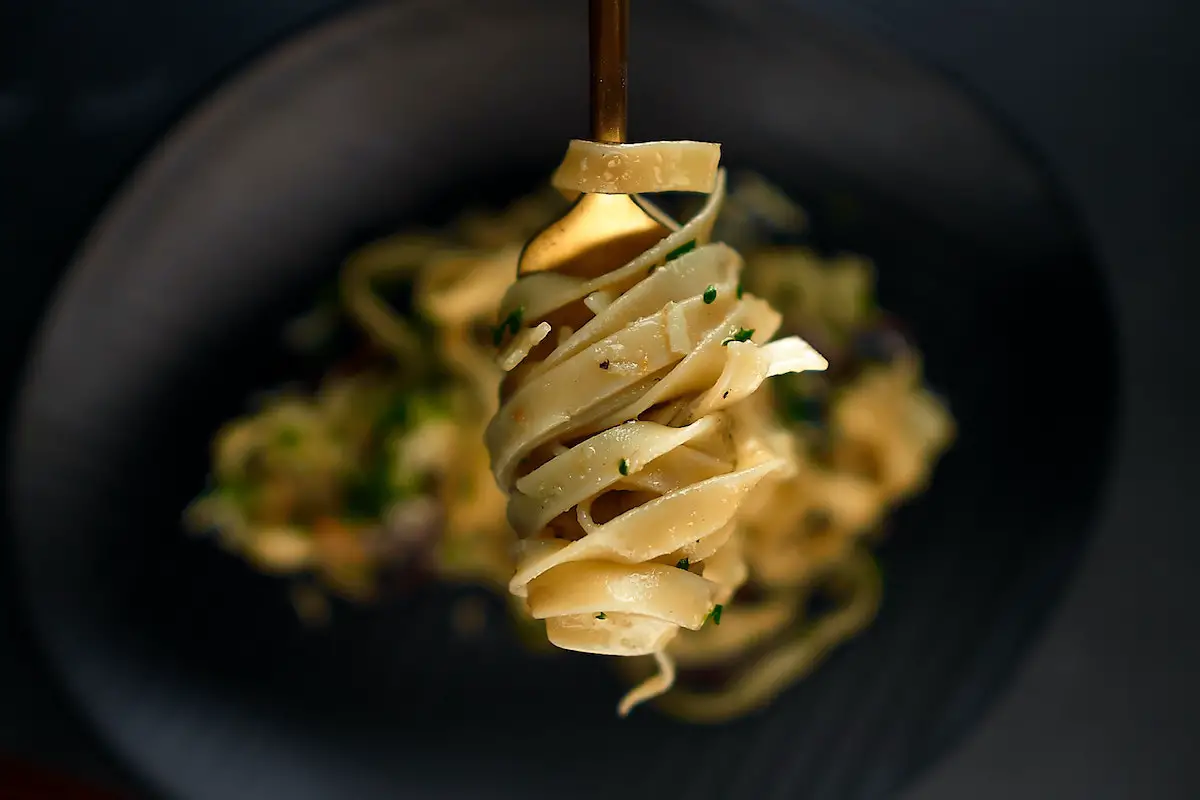
Newsletter Subscribe
Enter your email address below and subscribe to our newsletter

Enter your email address below and subscribe to our newsletter

Pasta is a versatile ingredient that can be paired with all kinds of meats and vegetables. It is easy to cook and makes a filling meal. But can you eat…
The post Does Pasta Have Dairy? appeared first on Foods Guy.
Having spent many years in some of the world’s best kitchens, I can tell you that pasta is an incredibly versatile and easy-to-prepare dish that can be adapted for every taste and need.
While pasta sauces can contain cream and dairy, which may be of concern to those with lactose intolerance, it is easy to adapt and substitute for your desired recipe.
I personally love using nutritional yeast to add that cheesy flavor to my pasta dishes. It’s a great way to incorporate that creamy taste in a vegan-friendly way.
But if you are someone who is intolerant to lactose or a committed vegan, it is important to know whether pasta contains dairy.
In This Article

Generally, pasta is made of wheat flour, water, and sometimes eggs. None of these ingredients contain dairy.
However, in some instances, pasta may be made with milk instead of water (or water and eggs) to create a creamier flavor and texture.
It’s important to read the label on any pre-packaged pasta to ensure what kind of ingredients are used.
When it comes to pasta dishes, there are numerous sauces that can be used.
Some of the most common pasta sauces include marinara, alfredo, carbonara, bolognese, and aglio e olio. While all of these sauces can be paired with pasta, not all of them are dairy-free.
For example, alfredo and carbonara sauce contain heavy cream, butter, and sometimes Parmesan cheese.
These sauces practically scream dairy. Bolognese and ragu sauces may also contain dairy in the form of milk or cream to add richness and flavor.
Aglio e olio is typically dairy-free but may contain Parmesan cheese and olive oil. Marinara sauce, on the other hand, is vegan and does not contain dairy.
Keep in mind that while some sauces may not contain dairy in the recipe, they may contain cheese or cream as a topping.
To be sure, it’s important to ask the server or chef about the sauce ingredients in a restaurant.
Fresh pasta, while generally consisting of the same ingredients as dried pasta, may include dairy.
Fresh stuffed pastas like ravioli, tortellini, and agnolotti often contain cheeses like ricotta and Parmesan cheese.
However, it’s important to understand that not all fresh pasta contains dairy and there are typically a range of sauces to choose from when ordering in a restaurant.
Dried pasta, which is the most widely available in supermarkets, is almost always dairy-free.
If you are lactose intolerant or vegan, there are several alternatives available that allow you to enjoy pasta dishes.
First off, you can choose to make your pasta dishes with dairy-free sauces or toppings.
Look for vegan or dairy-free recipes and try out alternative ingredients like almond milk, soy milk or nutritional yeast.
Alternatively, there are options to buy lactose-free milk, cheese and cream to use in your cooking.
Finally, there are a growing number of dairy-free pasta varieties being made available in supermarkets, including those made from vegetables or gluten-free substitutes like quinoa or rice flour.
Pasta made from wheat flour, water, and eggs is not vegan. However, there are many pasta varieties and recipes that do not include these ingredients and are therefore vegan-friendly.
Yes, you can eat pasta even if you’re lactose intolerant. Dried pasta made from wheat flour and water is typically dairy-free, and many pasta sauces can be made without dairy or substituted for plant-based alternatives.
There are many ways to enjoy pasta without dairy. Try making sauce bases out of vegetable purees, olive oil, or tomato paste. You can also substitute cow’s milk with almond milk or soy milk in your creamy pasta sauces, use dairy-free cheese or parmesan alternatives like nutritional yeast to add flavor.
If you are unsure about any ingredients in a pasta dish, always ask the server or chef. They can provide information about the ingredients and oils used in the dish and suggest suitable alternatives if necessary.
Does pasta have dairy? It’s not a straightforward answer. While fresh stuffed pasta may contain dairy, most dried pasta is dairy-free.
The sauces you choose to use on your pasta are where you need to exercise caution. Many pasta sauces contain dairy, including alfredo and carbonara, while marinara and aglio e olio are typically dairy-free.
Finally, for those of us that are lactose intolerant or vegan, there are a plethora of options available in the form of lactose-free dairy, dairy-free sauces, and non-traditional pasta options.